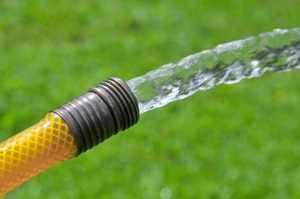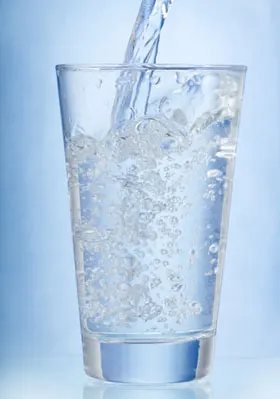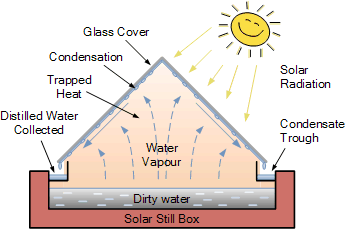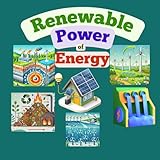
Freshwater Production
Freshwater Production
![]() Water is everywhere and the most essential ingredient for all the life here on Earth with access to clean drinkable freshwater supplies being a major human need. But sadly this basic human need is not always available to a large number of people around the world living in hot and dusty climates so freshwater production is vital in these areas.
Water is everywhere and the most essential ingredient for all the life here on Earth with access to clean drinkable freshwater supplies being a major human need. But sadly this basic human need is not always available to a large number of people around the world living in hot and dusty climates so freshwater production is vital in these areas.
While it may be true that the oceans, sea and other such surface waters cover almost three-quarters of the Earth’s surface, but the amount of clean, uncontaminated and drinkable water accounts for less than 3%, of which the majority is groundwater and aquifer (underground stream).
Also, the never ending effects of climate change and global warming due to the burning of non-renewable fossil fuels releasing harmful greenhouse gases into the atmosphere is putting an ever increasing demand upon the Earth’s environment. One significantly affected of this is in the global water infrastructure which includes flood defenses, drainage, hydro power and irrigation systems.
The combined effect of these adverse climate changes on freshwater systems is likely to become even more so as the world population increases with energy and freshwater production being the two most important challenges facing the world.

Freshwater (that is, water without salt) is not only used by humans and animals as drinking water but also for the irrigation of crops for food production or the watering of our flowers and lawns in the garden. Also, the cultivation of energy crops for biomass production can increase competition not only for the use of land but also for any available freshwater resources.
Clearly, access to freshwater in sufficient quantities and quality is extremely important even if freshwater resources are declining due to contamination and over exploitation by human activities.
Today we can produce clean fresh water through the application of the renewable energy systems such as wind power, solar energy and other such renewable technologies to power various water treatment processes for freshwater production.
These renewable and green energy resources can be used for the production of clean freshwater for drinking, agriculture and other such purposes from seawater, mineralised ground waters, dirty or contaminated waters as well as household, municipal and industrial residual waste waters, called grey water recycling.
The processing and supply of “clean water” means that some form of treatment is required which will require energy as freshwater production, especially by desalination, requires large amounts of energy.
Then water treatment is essential in meeting the increased demand and providing a guarantee for the future supply of freshwater of sufficient quantity and quality. However, the energy used for the freshwater production needs to be from economically sound and ecologically friendly sources such as the use of renewable energy sources or energy efficient, low-carbon methods, that help mitigate global climate change.
We have seen throughout this Alternative Energy website that the economic and industrial potentials of renewable energies, such as solar, geothermal, wind and wave energy, have many environmental advantages compared to burning fossil fuels. Distillation of dirty water is one of the many processes that can be used to provide clean fresh drinking water as it only requires the free solar thermal energy from the sun to heat the water.
There are many ways to produce freshwater, but the two main methods for using solar energy is by directly heating and evaporating water in a passive solar still, (this process is called solar distillation) or by capturing the solar energy using turbines, photovoltaics, etc, and transforming it into electrical or thermal energy to drive a desalination process.
Fresh Water from Desalination
Desalination (salt removal from water) is a process by which clean, fresh drinkable water is produced from normally undrinkable water such as dirty, contaminated or seawater. Desalination of water using solar energy is a good alternative to the conventional methods of freshwater production, especially in small remote or rural areas that use relatively small quantities of water, or were the transportation or building of a pipeline as a fresh water supply is not cost effective.
Solar energy desalination is a method by which the sun’s energy is used to desalinate seawater producing fresh drinkable water and the coupling of renewable energy sources with water desalination for freshwater production holds great promise for water scarce regions. In theory, solar energy from the sun can replace any other type of energy source, but as yet this is not yet feasible, especially for the larger scale desalination plants.
The two main methods by which the seawater salt(s), contaminates and dissolved particles are removed in the process of freshwater production is by: Membrane Desalination or by Thermal Desalination.
- Membrane Desalination – is the process in which the removal of the salt from the seawater is done by semi-permeable membranes (hence its name) acting as filters and electrical charges to separate the salts from the water. Membrane processes include reverse osmosis and electrodialysis.
- Thermal Desalination – is the removal of the salt by heating the seawater first and then condensing the purified vapour (steam) using cold pipes or plates to produce distilled water. Thermal processes use either steam generated from geothermal sources or electricity from the grid to heat the seawater.
Solar driven desalination plants used for freshwater production generally combine solar thermal energy or photovoltaic power production with conventional desalination methods. Solar thermal power desalination uses parabolic trough reflectors or solar dish collectors (using oil as their heat transfer fluid) and/or solar power towers to generate the steam, while solar photovoltaic (PV) systems directly convert the sunlight into electricity using solar cells, to heat the seawater.
The advantage of solar photovoltaic systems is that the electrical grid can be used as a back-up energy source in days of low irradiance and any excess electrical power generated from the PV system when the desalination plant is not producing can be fed back into the grid of setting any energy costs.
Wind power can also be regarded as a reliable and cost-effective power source. Desalination plants driven by wind turbines are becoming more frequent as wind energy can be used more efficiently providing that there is adequate wind velocity to rotate the turbines. Wind powered desalination has many advantages especially in windy and isolated locations by reducing their water production cost as compared to using conventional fossil fuels as a power source or the transportation of the fresh water to where it is needed producing safe, clean, drinking water.
Fresh Water from Distillation
When it comes to freshwater production, distillation is the process of purifying dirty water by boiling it, leaving any contaminates behind and then condensing the steam vapour back into freshwater. Solar driven distillation has been around since the beginning of time. The sun’s energy, which acts as an immense solar distillation process, creates the weather which converts the seawater into freshwater and rain as part of its water cycle.
Water purification of grey water or saline water (e.g. sea water) and even impure well water on a farm can be accomplished using a solar still. A solar still can be a very simple piece of equipment, which converts the suns solar radiation into thermal energy by providing a storage area for the heat.

We have all seen the condensation that collects on the glass of a greenhouse due to the watering of the plants inside, and a solar still based on this greenhouse effect are the simplest to construct.
Basically a greenhouse solar still consists of a square, round or rectangular basin or trough to hold the dirty water with a transparent cover over the top. This cover acts as the main condenser and is sloped steep enough to allow water forming on it to flow down to the bottom into a collecting trough. The cover also reduces heat losses and keeps the wind away.
The suns radiation warms and heats the water which evaporates and the resulting vapour condenses on the inside surface of the glass cover. Obviously, the side of the cover facing the sun needs to be transparent, but the side sloping in the opposite direction can be darkened or reflective to provide a cooler condensing surface at ambient temperatures.
Collection troughs are placed at the bottom of the cover to collect the purified distillate water. There are many possible basin type solar still designs around each with its own set of solar still advantages and disadvantages. The basin of some designs is filled naturally using rainwater while others increase the amount of incident solar radiation using reflectors to focuses it onto the water inside.
This simple example is easy to build but more advanced solar still systems either direct or indirect can be used to produce a larger quantity of freshwater or to recover the heat inside to heat more water. Large scale geothermal power plants placed along the shoreline of a sea or ocean can use their waste steam to desalinate seawater into drinking water or for irrigation. Then freshwater production using renewable energy sources is easily achievable with a few DIY skills and some imagination.
Freshwater Production Summary
A clean and reliable source of fresh drinking water is starting to become a scarce resource. Although the Earth is covered in water, only about 3% of it is drinkable freshwater, with the remainder, about 97% being seawater. Also with the increase in population, environmental impacts upon the Earth, pollution and climate change are all helping to reduce the availability of this freshwater supply.
We have seen here briefly, that different types of renewable energy sources can be used to power a desalination plant. The suitability and use of any given renewable energy supply for powering the desalination processes for freshwater production depends very much on the energy requirements of such a process and the type of renewable energy that is available, wind, solar, geothermal, etc.
Passive solar distillation of water is one of the many simple processes which can be used for water purification and freshwater production. The simplest and most basic process of freshwater production is in the use of a solar still.
Solar stills can be simple home made boxes or elaborate systems with multi condensing plates mirrors and reflectors to increase their heat absorption or with large water towers and ponds to increase their freshwater production. Either way, all solar stills work on the same principle that water is heated, evaporated to separate the water vapour from any dissolved matter and then condensed to produce clean drinking water.
The main advantage of passive solar stills is that there are no moving parts and only requires an input of thermal energy to work, which can be solar radiation direct from the sun. Passive solar distillation in solar stills can be enhanced further by as in active solar stills, by supplying an additional energy source from external solar thermal collectors or by using the waste thermal energy from geothermal power plants or industry.
Freshwater Production using renewable energy sources has a long way to go, but today solar desalination plants and systems are already being built with the quality of the water they can produce being very high.
Nevertheless, solar desalination is becoming a less expensive form of water treatment and unlike other forms of industrial techniques based on the physical separation of the water and solids such as reverse osmosis, electrodialysis, etc. which use fossil fuel generated electricity, freshwater production using solar thermal energy is free.
To learn more about “Freshwater Production”, or if you just want to explore the advantages and disadvantages of how solar stills work or how to construct one, then why not Click Here to get your copy of one of the top books on solar still construction direct from Amazon today and learn how you can use a solar still when camping to provide an almost unlimited source of freshwater.










I couldn’t believe that only three percent of the Earth’s water is freshwater, and that number is going down due to climate change! My father in law has been very paranoid recently about putting water in his food storage, and he told me to look into why I should be doing the same. I will be seriously considering storing water in my food storage too, even though we shouldn’t be running out of freshwater anytime soon!
very much bad now do not send any thing
Collecting rain water in barrels and rain gardens which capture storm water in a shallow basins are all ways to collect freshwater. Lakes and rivers are great places for fish and wildlife to live if the water is clean. Environmental education develops awareness, increases knowledge and creates the capacity for stewardship and good citizenship regarding the environment upon which we depend for life support.